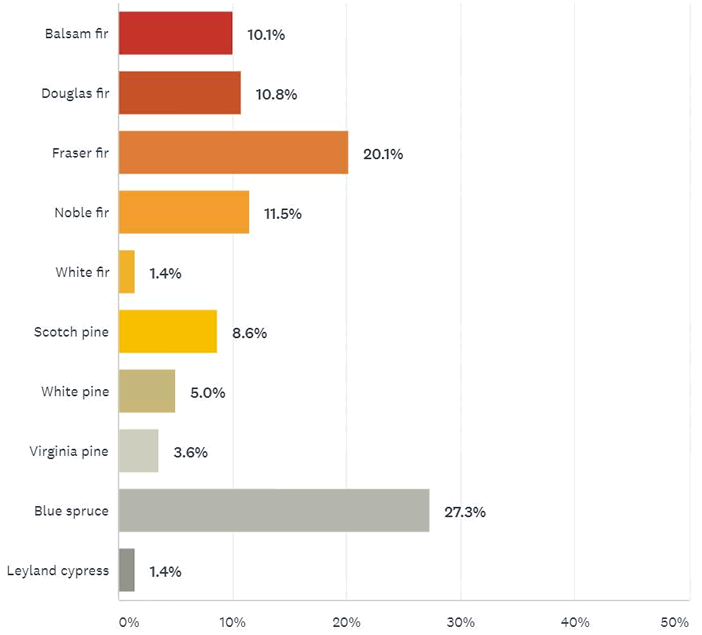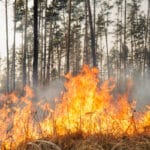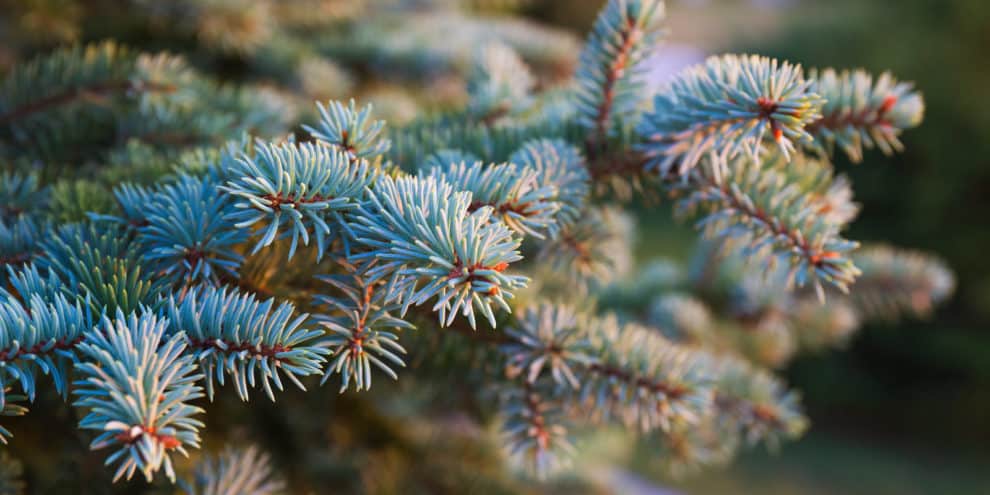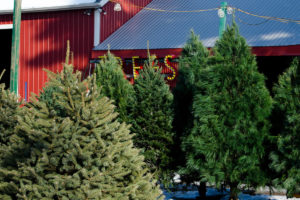According to the LANDTHINK Pulse results, 27.3% of our audience say the blue spruce, with its attractive silvery-blue needles, is their favorite variety of Christmas tree. Whether you prefer real or artificial, decorating a tree at Christmastime is one of the most important traditions in many households across America. The Christmas tree is symbolic of the holiday season, and takes center stage among all other holiday decor. In recent years, people have become more eco-conscious, opting for environmentally-friendly real trees instead of their non-biodegradable plastic counterparts that commonly contain toxins. According to the National Christmas Tree Association, 27.4 million people purchased a real tree in 2016, compared to 18.6 million, who bought fake trees. Approximately 350,000 acres in the U.S. are currently in production for growing Christmas trees.
Last month, in the spirit of Christmas, the December Pulse asked: Which is your favorite variety of Christmas tree?
The blue spruce is growing in popularity among families as the tree of choice for one main reason- its attractive appearance. Native to the Rocky Mountains and the official state tree of both Utah and Colorado, this top choice by our audience is known for its symmetrical form and stunning silvery-blue foliage. The tree has unique square needles that are longer on the lower branches but somewhat shorter on the upper branches. The needles have a very sharp point on the end and it’s the prickly points that give this species its name Picea pungens, from a Latin word meaning “to prick”.
As a Christmas tree, you can’t go wrong with a blue spruce. This variety has a lot of desirable characteristics like sturdy limbs that are capable of holding lots of heavy ornaments, as well as excellent needle retention. However, the blue spruce does a have a few cons. If you’re looking for that cozy smell of a freshly cut tree, you won’t be happy with this one. This species is not very fragrant. Strangely, if the needles are broken, they’ll give off a smell most people consider unpleasant. The extremely sharp needles make the stately blue spruce a not-so-great choice for homes with small children and pets.
Coming in a close second among our audience was the Fraser fir, considered to be “the most popular Christmas tree species in the world”. This species has a beautiful silvery-green color, wonderful scent, and a slender shape that make it a perfect choice for small spaces like condos and apartments. As long as you keep it properly watered, this tree will hold its needles long after the holidays have passed.
The two least favorite trees turned out to be the Leyland cypress and the white fir. The Leyland cypress has moderate branch strength compared to other varieties, a light scent, and its popularity is limited to the southeastern states. The white fir is usually more expensive than other varieties, because it takes a long time to grow, but it does have a pleasant citrus scent and durable branches.
Based on the number of responses we received, most of you don’t just wander around the local Christmas tree farm or lot and buy the first tree you see- you come with a specific variety in mind to purchase. The LANDTHINK audience certainly expressed mixed views on the variety of tree they prefer to grace their home during the holidays, as our informal online survey revealed. The results were all over the board, but the largest percentage (27.3%) indicated that they preferred a Blue spruce, followed closely by 20.1% who said they liked a Fraser fir, and 11.5% who preferred a Noble fir. The least favorite varieties among respondents were the Leyland cypress (1.4%) and the white fir (1.4%).
A lot of people speculate that the most popular Christmas tree picks simply depends on where you live. Every state has its own distinctive taste. Tree choice also has a lot to do with tradition. Folks choose a particular tree for a lot of different reasons- like durability and smell- but most of the time it comes down to one thing- which one the generations before you preferred. People will usually choose the same type of tree they were raised with. So, if several generations of your family had a blue spruce, chances are you’ll have a bruce spruce, too.
Here’s how the results panned out:

Thank you to everyone who participated and shared the Pulse with friends and connections in the land industry. LANDTHINK would like to extend a big thank you to LOTFLIP for sponsoring the December Pulse. LOTFLIP is part of the LANDFLIP NETWORK and is devoted to lots for sale under 20 acres, such as beach lots, commercial and development lots, estate lots, golf, lake lots, mountain, residential and rural lots. LOTFLIP offers a streamlined approach to connect buyers and sellers of small acreage lots and features lot auctions, lots for lease, and foreclosed lots.
Become a Pulse sponsor! It’s a great way to ensure your brokerage is the first one buyers and sellers call when they have a need to buy or sell property. You’ll get insane exposure on Social + Email + Web. That’s 500,000+ monthly eyes on you! Once you have it, you won’t want to give it up! Pulse sponsorships are offered on a first come first serve basis and are subject to certain limitations. If your business would be interested in sponsoring the February Pulse question, please contact us soon.
Do you have a suggestion for next month’s Pulse question? Submit your question and we might choose yours!
We want to know what you think about our January Pulse question, chosen and sponsored by American Forest Management: What impact will the 2017 tax reform law have on the number of transactions and dollars invested in land real estate in 2018? Answer now.
This content may not be used or reproduced in any manner whatsoever, in part or in whole, without written permission of LANDTHINK. Use of this content without permission is a violation of federal copyright law. The articles, posts, comments, opinions and information provided by LANDTHINK are for informational and research purposes only and DOES NOT substitute or coincide with the advice of an attorney, accountant, real estate broker or any other licensed real estate professional. LANDTHINK strongly advises visitors and readers to seek their own professional guidance and advice related to buying, investing in or selling real estate.








Add Comment